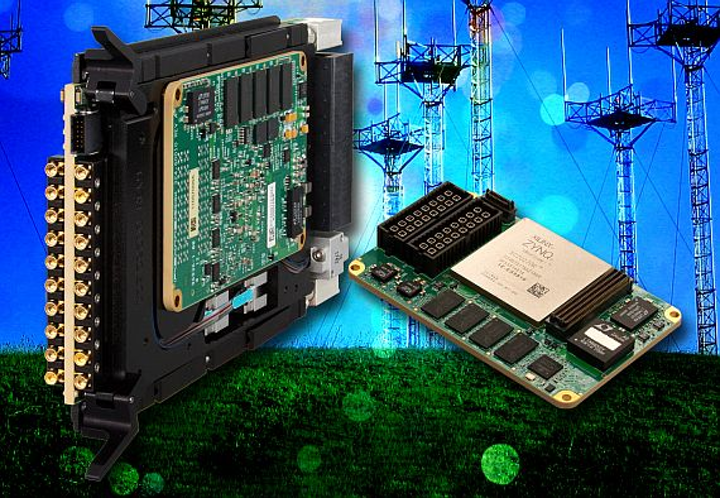Could New Microchip Boost US Military Power?
Article by Dave Makichuk November 13, 2020 (asiatimes.com)
• A Massachusetts-based aerospace and defense company, Mercury Systems Inc. has developed a new radio frequency processing microchip that will give the Pentagon the ability to reduce the processing time for radar, electronic warfare and 5G communication applications. The technology comes at a time when microelectronics is the Defense Department’s top research-and-development priority, National Defense reported.
• Artificial intelligence and machine learning prototypes are being inserted into electronic warfare systems and will soon be in the hands of select operational units. “Every soldier is holding a device that is enabled by microelectronics,” said Tom Smelker, vice president and general manager for microsystems at Mercury Systems. “It’s imperative to keep our technology advantaged against our adversaries.”
• Advancements in hypersonics and stealth by adversarial countries (China, Russia) are driving the need for new radar capabilities, Smelker noted. Driving down processing times will help the Pentagon counter enemy electronic warfare systems. Increasing processing speeds “where we can process a lot of signals quickly and respond is going to really drive the electronic warfare market and really be a game changer for defense systems,” Smelker said. The microchip can enable real-time spectrum processing for 5G communications, which is expected to be up to 20 times as fast as 4G.
• In July, Mercury Systems received a US$11.7M order to deliver advanced digital RF Memory (DRFM) Jammers to the US Navy. The DRFM jammers are designed to be used in airborne pod-based solutions to validated electronic attack techniques and custom RF components supporting advanced electronic warfare test and training capabilities.
• Col. Philip J. Corso was a member of President Eisenhower’s National Security Council and former head of the Foreign Technology Desk at the US Army’s Research & Development. In his groundbreaking 1997 book, The Day After Roswell, Corso claims to have distributed extraterrestrial technology to US corporations that were retrieved from UFO crashes, such as at Roswell in 1947. The corporations were permitted to register the patents for themselves. These reverse-engineered technologies include fiber optics, integrated circuits (microchips), Kevlar material and particle beams. The microchip went on to change the world.
 In his groundbreaking 1997 book — The Day After Roswell — Col. Philip J. Corso claims that during his service he distributed to corporations foreign technology which was actually extraterrestrial in origin.
In his groundbreaking 1997 book — The Day After Roswell — Col. Philip J. Corso claims that during his service he distributed to corporations foreign technology which was actually extraterrestrial in origin.
Corso, a member of President Eisenhower’s National Security Council and former head of the Foreign

Technology Desk at the US Army’s Research & Development, claims that such artifacts were retrieved from UFO crashes, such as that which reportedly happened at Roswell in 1947.
According to Corso, the corporations involved were permitted to register the patents.
He also said that technologies such as fiber optics, integrated circuits (microchips), kevlar material and particle beams were all reverse engineered from extraterrestrial spacecraft.

Whether you want to believe that or not, there is one thing we do know — the microchip has changed the world. Dramatically.
Case in point, a Massachusetts-based aerospace and defense company says it has developed a new radio frequency processing microchip that could give the Pentagon the ability to reduce the processing time for radar, electronic warfare and 5G communication applications, National Defense reported.
frequency processing microchip that could give the Pentagon the ability to reduce the processing time for radar, electronic warfare and 5G communication applications, National Defense reported.
Mercury Systems Inc. recently introduced its RFS1080 RF systems package, a high-frequency processing compact chip.
The technology comes at a time when microelectronics is the Defense Department’s top research-and-development priority, National Defense reported.
Artificial intelligence (AI) and machine learning (ML) prototypes are being inserted into electronic warfare systems and will soon be in the hands of select operational units.
“Every soldier is holding a device that is enabled by microelectronics,” said Tom Smelker, vice president and general manager for microsystems at Mercury Systems.
“It’s imperative to keep our technology advantaged against our adversaries. How do we do that? Through microelectronics advancement.”
FAIR USE NOTICE: This page contains copyrighted material the use of which has not been specifically authorized by the copyright owner. ExoNews.org distributes this material for the purpose of news reporting, educational research, comment and criticism, constituting Fair Use under 17 U.S.C § 107. Please contact the Editor at ExoNews with any copyright issue.
